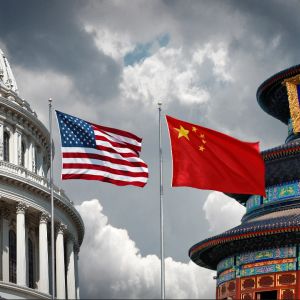China to US: We don’t need you, never did in the last 70 years
4 min read
Chinese President Xi Jinping, whose reputation is that of never yielding to anyone, is not backing down from the US-China trade conflict, saying that China has not depended on the United States for over seven decades and probably never will again. “ For over 70 years, China’s development has relied on self-reliance and hard work, never on handouts from others ,” Xi said in a public statement Friday. “ It is not afraid of any unjust suppression .” The comments came just minutes before China’s Customs authority announced that the Ministry of Finance had raised tariffs on American goods to 125%, in a tariff-for-tariff war with President Donald Trump’s 145% tax on Chinese imports. Xi will not be bullied and dares to forgo the US market Owing to how dependent the Chinese market is on exports, Xi may have a case to argue only if he convinces other nations to take up the amount of goods it has exported to the US market annually. That’s easier said than done, but Xi is not one to back down. China posted a 10.7% year-over-year export surge in December 2024, buoyed by exporters front-loading shipments ahead of the Lunar New Year and the worry of more trade restrictions. China’s trade surplus widened to $104.8 billion for the month, including a $33.5 billion surplus with the US. According to data from the China Briefing, in 2024, the United States economy reached approximately US$29.2 trillion, growing at a rate of 2.8%. The North also saw a considerable two-year increase in its outbound direct investment (ODI) totaling $364 billion, particularly from countries like Ireland, Switzerland, and the Netherlands. The US economy is still the world’s largest because of its consumer-driven model. On the flipside, China’s economy expanded by 5.0% in 2024 to bring its GDP to approximately RMB 134.9 trillion (US$18.9 trillion). The growth rate may have outpaced the US in percentage terms, but China’s per capita GDP stood at US$13,445, much lower than the US figure of US$86,600. China’s ODI went up by 11.3% last year, focusing on initiatives like the Belt and Road Initiative and its investments in clean energy and high-tech sectors. The East Asian nation follows the US in economy size terms, a fact that Xi now wants to overturn by using the trade war to convince other countries to go against the US. Yet, the Chinese leader’s defiant tone contrasts with signs of stress within China’s manufacturing base. Factories in Guangdong and Shenzhen have suspended operations due to tariff uncertainty, and companies that rely heavily on US demand are bracing for revenue collapse. “We can only hang on for so long,” said Hong Binbin, owner of a toy manufacturing firm in Shenzhen. “If we can’t hold out, we’ll shut down the factory.” American businesses are also scrambling to adjust to the Trumpian markets. At Darianna Bridal & Tuxedo in Pennsylvania, co-owner Franco Salerno is worried about how much 223 dresses currently en route from China will cost him. “ It will eat my salary up ,” he said, also promising to not pass the charges to brides. Xi plays the long game, Trump pushes for decoupling Xi is not leaving office anytime in the foreseeable future, since he abolished presidential term limits in 2018. He faces no re-election pressure, much unlike Trump, who must leave office by 2029, unless he follows through on “defying constitutional norms.” The Chinese leader has spent years preparing the country for decoupling from the West, according to political analysts. “ He believes the Chinese political system is superior to the American one ,” said Joseph Torigian of American University. “ He likely views this trade war as proof that China must become even more self-sufficient .” Trump tariffs may have given Xi political cover if China ever falls into an economic crisis. “ This saves Xi from having to take responsibility for China’s weak growth. It’s a ‘get out of jail free’ card ,” reckoned Jessica Teets, a political scientist at Middlebury College. If no agreement falls in place soon, analysts are warning consumers that they may face unreasonable prices and fewer product choices if the US loses access to Chinese manufacturing. “If we break through a $19.95 or $29.95 price point, sales will drop,” said cosmetic bag manufacturer Lay-n-Go co-founder Adam Fazackerley. Trump insists that his ultimate goal is to eliminate the US trade deficit and revive domestic manufacturing, but before the target is realized, the weight of the trade war could fall on US consumers. “ Hopefully, China realizes that the days of ripping off the USA. are over ,” the POTUS said last Wednesday, announcing a 10% baseline tariff on virtually all imports, but sparing allies for 90 days. Cryptopolitan Academy: Tired of market swings? Learn how DeFi can help you build steady passive income. Register Now

Source: Cryptopolitan



